#FBK
-
 January 24, 2024Leadership in a context of scientific excellenceFondazione Bruno Kessler is a research and knowledge production organization. By virtue of these identity characteristics, FBK decided to open 2024 with an inspirational talk on the topic of scientific leadership, dedicated to its staff.
January 24, 2024Leadership in a context of scientific excellenceFondazione Bruno Kessler is a research and knowledge production organization. By virtue of these identity characteristics, FBK decided to open 2024 with an inspirational talk on the topic of scientific leadership, dedicated to its staff. -
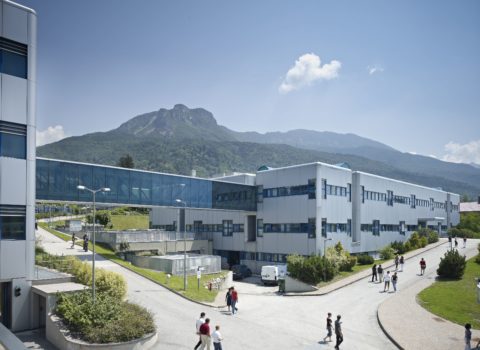
-
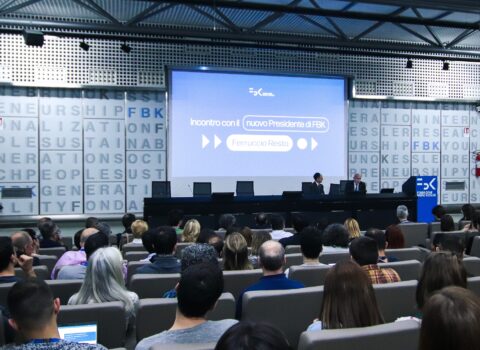 May 25, 2023President Ferruccio Resta at FBK for first BoD meeting and to meet staffFirst BoD session and first meeting with all staff today at the Povo site for Fondazione Bruno Kessler President Ferruccio Resta, who succeeds Francesco Profumo.
May 25, 2023President Ferruccio Resta at FBK for first BoD meeting and to meet staffFirst BoD session and first meeting with all staff today at the Povo site for Fondazione Bruno Kessler President Ferruccio Resta, who succeeds Francesco Profumo. -
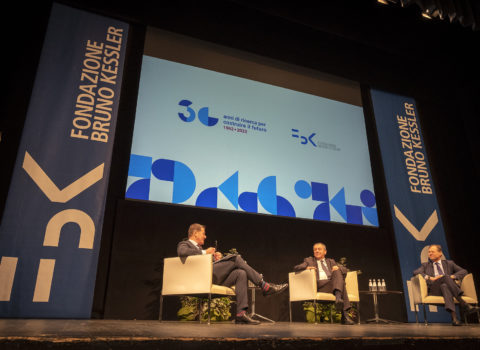 November 10, 2022Sixty years of Fondazione Bruno Kessler. The future asks us to allow for the communication of scienceWe, at Fondazione Bruno Kessler, celebrated our sixtieth birthday. Since it is an institution and not a person, it would not be an overstatement if we wrote "one thousand" instead of "one hundred of these days."
November 10, 2022Sixty years of Fondazione Bruno Kessler. The future asks us to allow for the communication of scienceWe, at Fondazione Bruno Kessler, celebrated our sixtieth birthday. Since it is an institution and not a person, it would not be an overstatement if we wrote "one thousand" instead of "one hundred of these days." -
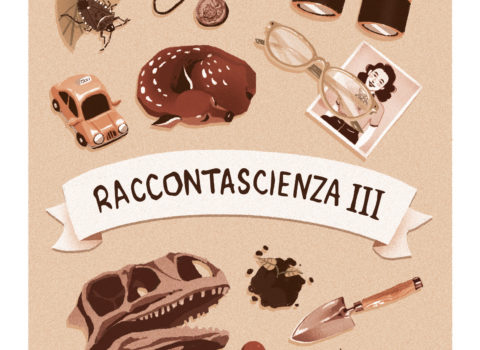 June 23, 2022Raccontascienza III: twelve new short stories to talk about science to the little onesThe literary contest for scientific short stories organized by the institutes of THERS arrives at the third edition
June 23, 2022Raccontascienza III: twelve new short stories to talk about science to the little onesThe literary contest for scientific short stories organized by the institutes of THERS arrives at the third edition -
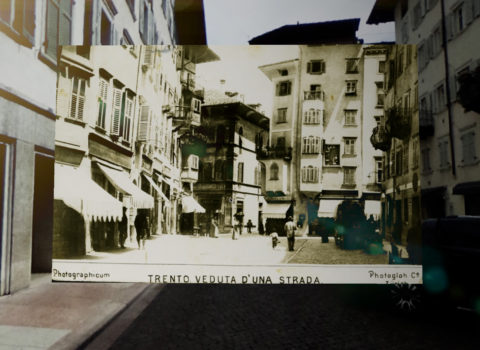 December 20, 2021So it was, if you likeTOTEM: A dip into the past through the eyes of the present and with the help of 3D
December 20, 2021So it was, if you likeTOTEM: A dip into the past through the eyes of the present and with the help of 3D -
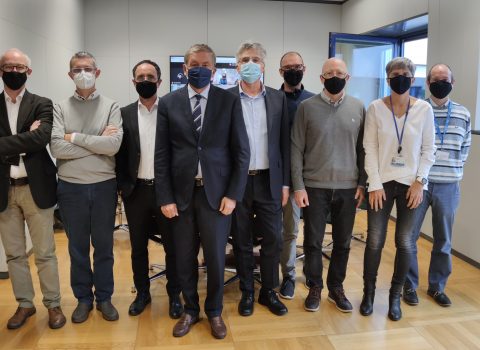 October 2, 2020FBK has chosen who will lead the new Research CentersCimatti will lead the digital industry center, Crema the one for sustainable energy, Pistore the one for the digital society and Ranise the one for cybersecurity. As for health, there will be three new centers: health and wellness services will be entrusted to Forti, health emergencies to Merler and artificial intelligence for health and well-being to Ghidini.
October 2, 2020FBK has chosen who will lead the new Research CentersCimatti will lead the digital industry center, Crema the one for sustainable energy, Pistore the one for the digital society and Ranise the one for cybersecurity. As for health, there will be three new centers: health and wellness services will be entrusted to Forti, health emergencies to Merler and artificial intelligence for health and well-being to Ghidini. -
 June 12, 2020Law, medicine and new technologies: artificial intelligence supporting human beings.Risks and benefits of using artificial intelligence in medicine: the perspectives of law and technology.
June 12, 2020Law, medicine and new technologies: artificial intelligence supporting human beings.Risks and benefits of using artificial intelligence in medicine: the perspectives of law and technology. -
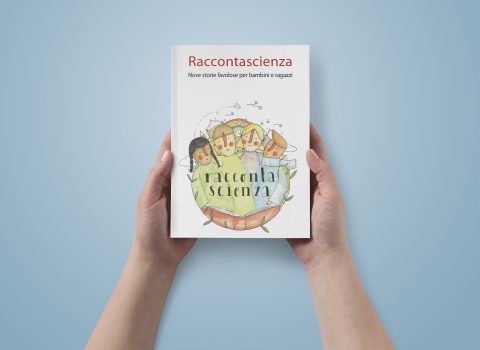 December 20, 2019Raccontascienza: ecco il libro che parla di scienza ai più piccoliUn progetto letterario della Fondazione Bruno Kessler per spiegare la scienza ai più piccoli attraverso brevi racconti
December 20, 2019Raccontascienza: ecco il libro che parla di scienza ai più piccoliUn progetto letterario della Fondazione Bruno Kessler per spiegare la scienza ai più piccoli attraverso brevi racconti -
October 16, 2018SATT2018: the Annual School for Translators Sells Out in Milan as WellHeld for the first time outside our Region, SATT has proven to be an international event for industry experts and translators
-
March 26, 2018The veil in the Islamic world (and outside)In recent years, in particular after the Twin Towers attacks on September 11, 2001, growing attention has been paid to Islam, until then generically associated with sandy dunes and pointed minarets and then increasingly recognized within the Western world as unsuspecting and exotic next door tenant
-
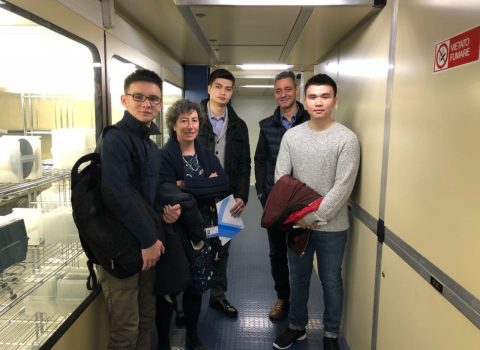 March 16, 2018My internship in FBK, from KazakhstanEvery year, Kazakh National University named after Al-Farabi gives an opportunity to every student to pass an internship in any country in the world. This is an excellent opportunity for students of this University
March 16, 2018My internship in FBK, from KazakhstanEvery year, Kazakh National University named after Al-Farabi gives an opportunity to every student to pass an internship in any country in the world. This is an excellent opportunity for students of this University -
September 11, 2017Jeff Kramer at the SEFM conference organized by FBKThe fifteenth edition is being held in Trento from September 6 to 10, and aims to bring together leading researchers and professionals from academia, industry and administration to advance the state of the art in Formal Methods.
-
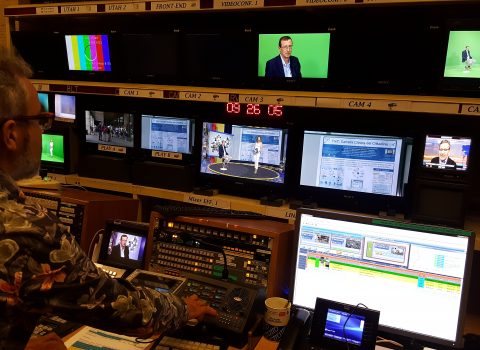 August 9, 2017HEALTH AND IT IN THE SERVICE OF CITIZENSFBK research will be aired on RAI3 on Sunday, August 13, in the "VivinTrentino" show
August 9, 2017HEALTH AND IT IN THE SERVICE OF CITIZENSFBK research will be aired on RAI3 on Sunday, August 13, in the "VivinTrentino" show -
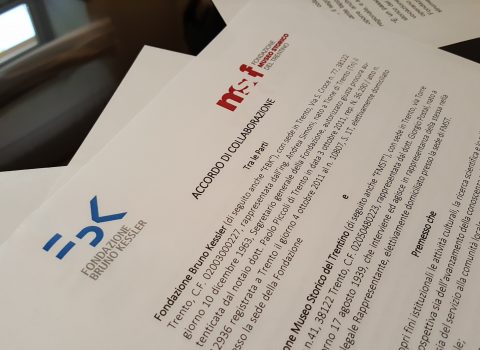 August 4, 2017COLLABORATION AGREEMENT BETWEEN FBK AND FONDAZIONE MUSEO STORICO DEL TRENTINO SIGNED TODAYThe long-standing relationship between the two institutions has been strengthened
August 4, 2017COLLABORATION AGREEMENT BETWEEN FBK AND FONDAZIONE MUSEO STORICO DEL TRENTINO SIGNED TODAYThe long-standing relationship between the two institutions has been strengthened -
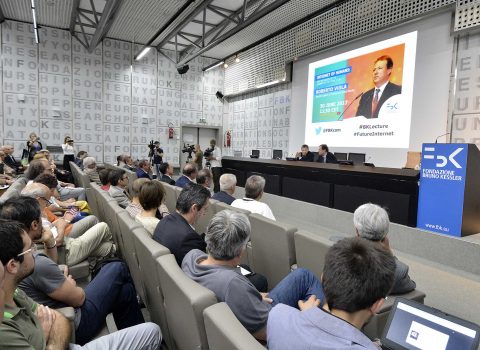 June 30, 2017How we would like the internet of the future to be. ROBERTO VIOLA AT THE BRUNO KESSLER LECTUREWhat great opportunities does the Internet offer? What concerns does it raise? How can Europe contribute to the development of a more human being-centered Internet?
June 30, 2017How we would like the internet of the future to be. ROBERTO VIOLA AT THE BRUNO KESSLER LECTUREWhat great opportunities does the Internet offer? What concerns does it raise? How can Europe contribute to the development of a more human being-centered Internet? -
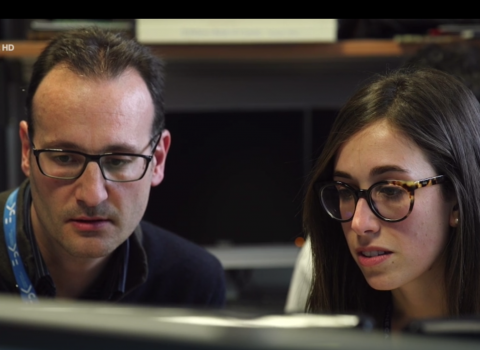 June 22, 2017FABIO REMONDINO, FBK RESEARCHER, FEATURED IN THE NEW SEASON OF THE “SUPERQUARK” TV SHOWOn Wednesday June 21, the new "Superquark" season started on Italy's national public broadcasting network. "A pixel world" is a story about new technological challenges focusing on "photogrammetry"
June 22, 2017FABIO REMONDINO, FBK RESEARCHER, FEATURED IN THE NEW SEASON OF THE “SUPERQUARK” TV SHOWOn Wednesday June 21, the new "Superquark" season started on Italy's national public broadcasting network. "A pixel world" is a story about new technological challenges focusing on "photogrammetry" -
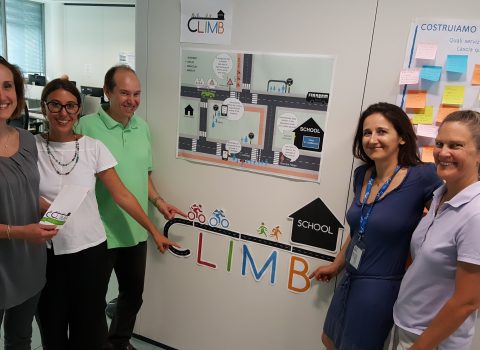 June 19, 2017FBK AMBASSADOR OF INNOVATION AT CAGLIARI ‘S G7 ON TRANSPORTATION WITH THE “CLIMB” PROJECT ON CHILDREN’S INDIPENDENT MOBILITYIt is one of the seven good practices, selected by a scientific committee of more than 400, that will be representing Italy in Cagliari, during the "Transportation G7"
June 19, 2017FBK AMBASSADOR OF INNOVATION AT CAGLIARI ‘S G7 ON TRANSPORTATION WITH THE “CLIMB” PROJECT ON CHILDREN’S INDIPENDENT MOBILITYIt is one of the seven good practices, selected by a scientific committee of more than 400, that will be representing Italy in Cagliari, during the "Transportation G7" -
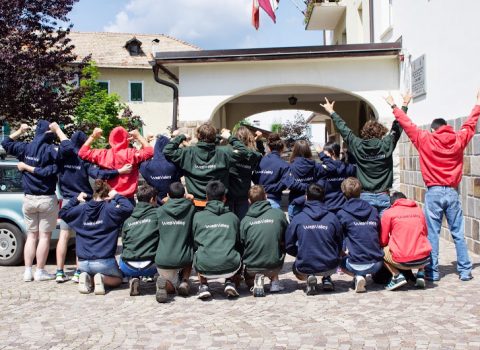 June 16, 2017Ready to start? Here’s the Webvalley 2017 team12 Italians, of which 6 from Trentino, and 6 Americans are the protagonists of the 17th edition of WebValley, which will open the lab on Sunday, June 18, in Casez, Valle di Non (Trentino).
June 16, 2017Ready to start? Here’s the Webvalley 2017 team12 Italians, of which 6 from Trentino, and 6 Americans are the protagonists of the 17th edition of WebValley, which will open the lab on Sunday, June 18, in Casez, Valle di Non (Trentino). -
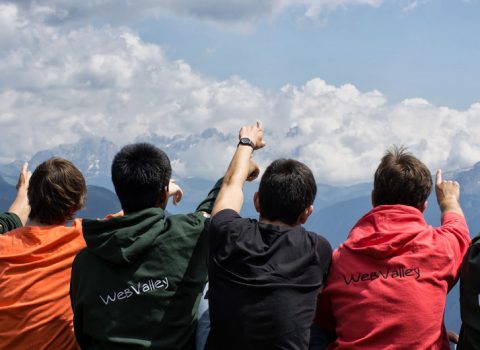 June 15, 2017“Andare avanti. Non fermarsi. Approfondire. Questo è quanto quell’esperienza mi ha insegnato”Daniele Gadler ha partecipato WebValley nel 2013 e attualmente studia Informatica in una prestigiosa università in Germania
June 15, 2017“Andare avanti. Non fermarsi. Approfondire. Questo è quanto quell’esperienza mi ha insegnato”Daniele Gadler ha partecipato WebValley nel 2013 e attualmente studia Informatica in una prestigiosa università in Germania -
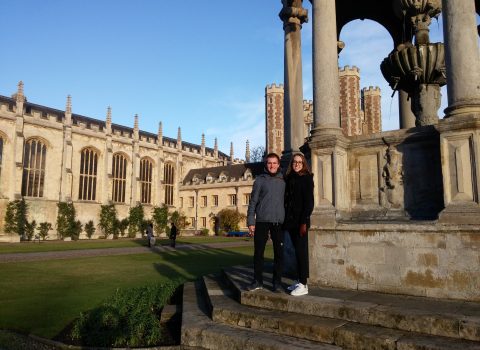 June 15, 2017“Terrific. Sign up for it!”Speaking of WebValley, two students enthusiastically laugh and send us their stories from Cambridge (UK)
June 15, 2017“Terrific. Sign up for it!”Speaking of WebValley, two students enthusiastically laugh and send us their stories from Cambridge (UK) -
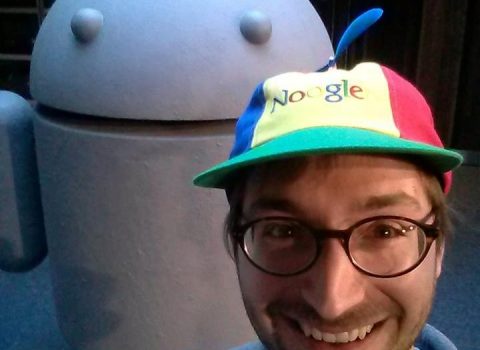 June 15, 2017“AN UNFORGETTABLE EXPERIENCE!”Federico Scrinzi, 2009 edition "webvallian", now works for Google in Dublin
June 15, 2017“AN UNFORGETTABLE EXPERIENCE!”Federico Scrinzi, 2009 edition "webvallian", now works for Google in Dublin -
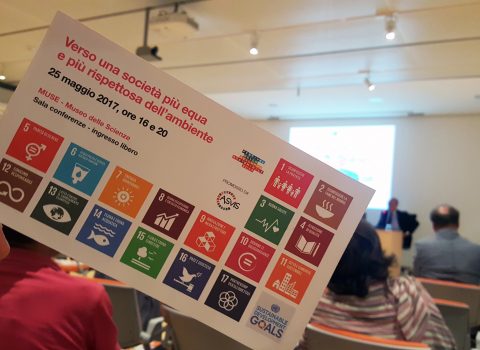 June 7, 2017FBK IN THE STRATEGIC ALLIANCE FOR A MORE EQUITABLE AND ENVIRONMENTALLY FRIENDLY SOCIETY"We need a change of mindset". Those were the words of Enrico Giovannini, spokesman for ASviS, who on May 25 closed the event at the Trento Science Museum dedicated to the spread of the culture of sustainable development. In the video, interviews with Giovannini and IRVAPP director Antonio Schizzerotto.
June 7, 2017FBK IN THE STRATEGIC ALLIANCE FOR A MORE EQUITABLE AND ENVIRONMENTALLY FRIENDLY SOCIETY"We need a change of mindset". Those were the words of Enrico Giovannini, spokesman for ASviS, who on May 25 closed the event at the Trento Science Museum dedicated to the spread of the culture of sustainable development. In the video, interviews with Giovannini and IRVAPP director Antonio Schizzerotto. -
May 12, 2017On the frontline of fight against child cancerTwo meetings: one with Ospedale Bambino Gesù in Rome, and one with the Proton therapy Center in Trento
-
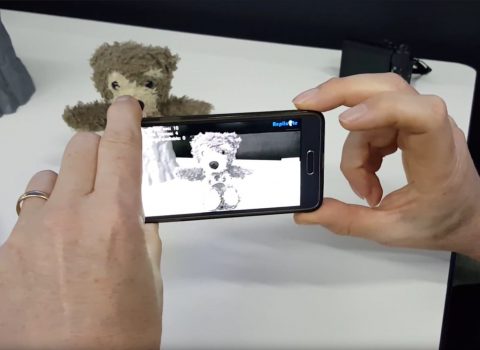 April 4, 2017Augmented reality: the “Replicate” and “Spark” projects at FBKWhat if we could simply pick up our cell phones, capture the interesting stuff around us and bring take it into our future 3D virtual lives? To find out more about it, we interviewed two experts in this kind of technology: Paul Chippendale, from FBK, and Gaetano Cascini, from the Polytechnic University of Milan.
April 4, 2017Augmented reality: the “Replicate” and “Spark” projects at FBKWhat if we could simply pick up our cell phones, capture the interesting stuff around us and bring take it into our future 3D virtual lives? To find out more about it, we interviewed two experts in this kind of technology: Paul Chippendale, from FBK, and Gaetano Cascini, from the Polytechnic University of Milan. -
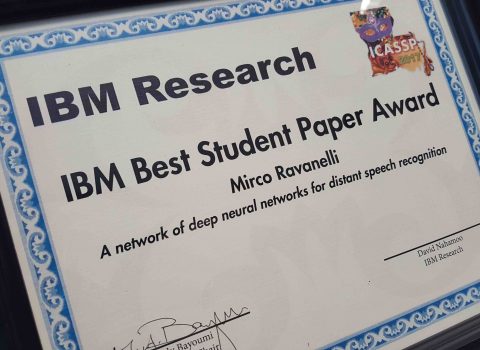 March 31, 2017A Researcher from Trentino awarded at the most important world conference on voice recognitionThe reward of $ 1,500 was awarded to Mirco Ravanelli, first author of the paper by FBK and University of Montreal (Canada).
March 31, 2017A Researcher from Trentino awarded at the most important world conference on voice recognitionThe reward of $ 1,500 was awarded to Mirco Ravanelli, first author of the paper by FBK and University of Montreal (Canada). -
March 22, 2017Human brain and mind. The future of neuroscience in TrentinoFriday, March 17, 2017 a conference in Rovereto (Tn) on neuroscience and the new disciplines in the field. The program includes the Lecture by Roberto Cingolani, Scientific Director of the Italian Institute of technology – IIT
-
March 21, 2017L’arte di migrare | The art of migratingFBK-ISR is a partner of "The art of migrating" sponsored by the City of Riva del Garda in the framework of the 13th Action Week Against Racism from March 20 to March 26
-
March 3, 2017Il presidente CNR Massimo Inguscio alla Fondazione Kessler di TrentoLo scorso mercoledì 8 febbraio 2017 Massimo Inguscio, presidente del CNR - Consiglio Nazionale delle Ricerche, in visita alla FBK accompagnato dall'assessore PAT Sara Ferrari e dalla dirigente del Dipartimento della conoscenza Livia Ferrario.
-
February 17, 2017A pilot project at Fondazione Bruno Kessler in Trento promotes a healthy lifestyleAT, APSS, INAIL and FBK experiment the "Key to Health" project that aims to promote healthy lifestyles in the workplace and to prevent some of the most common chronic issues.
-
January 4, 20172017 Highlight EventsLooks like 2017 will be an eventful year for Fondazione Bruno Kessler. Alongside the initiatives dedicated to the discussion on FBK's research topics, the attention to dissemination to a broad audience, as well as to collaborations with prestigious national and European organizations, remains high.
-
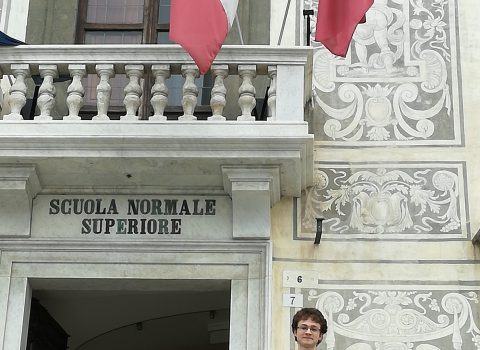 December 20, 2016WebValley alumni: Filippo QuattrocchiBelow you will find the contribution of one of the participants of the 2014 Webvalley summer Internet camp. Filippo Quattrocchi currently studies mathematics in Pisa.
December 20, 2016WebValley alumni: Filippo QuattrocchiBelow you will find the contribution of one of the participants of the 2014 Webvalley summer Internet camp. Filippo Quattrocchi currently studies mathematics in Pisa.